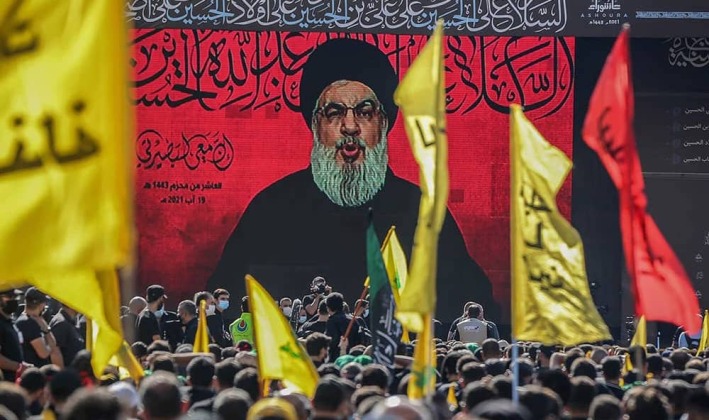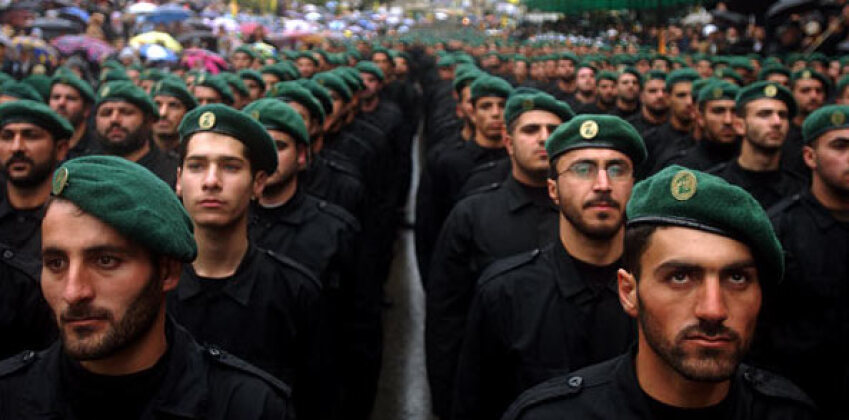News
How Powerful Is Hezbollah? The Militia Trained By North Korea and Hardened By War Against Al Qaeda
Rising to power during the Lebanon War in the 1980s, the Lebanese political party and militia Hezbollah was formed as a resistance group in Shiite majority southern Lebanon at a time of Israeli military occupation. The militia gained its first combat experience carrying out multiple attacks on Israeli forces within southern Lebanon, and is alleged to have also supported a strike on U.S. forces in the country which killed 241 Marines and 58 French paratroopers. After Israel’s withdrawal in mid-2000 Hezbollah was significantly more free to increase its military capabilities with support from Iran, Syria and North Korea, and much of its central leadership, including Secretary General Hassan Nasrallah, Security and Intelligence chief Ibrahim Akil and head of counter-espionage operations Mustapha Badreddine, were trained in North Korea. Hezbollah’s intelligence sharing, command structures and security apparatus continue to closely reflect this influence, with Korean instructors reported to have also been deployed to Lebanon as late as the 2000s.

Fighting with North Korean influenced tactics, Hezbollah also benefitted extensively from support from Korean specialists in the early 2000s who oversaw the construction of a vast network of underground tunnels, bunkers and other military facilities stretching for kilometres across southern Lebanon. Israeli experts described Hezbollah’s fighting capacity that of “a defensive guerrilla force organised along North Korean lines,” concluding: “All the underground facilities [Hezbollah’s], including arms dumps, food stocks, dispensaries for the wounded, were put in place primarily in 2003–2004 under the supervision of North Korean instructors.” The network closely resembled that on the northern side of the inter-Korean demilitarised zone, with command bunkers constructed to a depth of 40 meters using poured concrete making them effectively invulnerable to Israeli strikes. The region south of the Litani River alone was thought to have over 600 ammunition and weapons bunkers eight or more meters underground, with hundreds more across the wider region which made an assault on Hezbollah particularly challenging for Israel. Although classified as a terrorist organisation by Israel and the majority of Western countries, Hezbollah has gained no such classification at the United Nations or from the large majority of non Western states which has allowed state to legally maintain ties with the group.

A turning point for Hezbollah’s international prestige was its 34 day war with Israel from July-August 2006, during which Israel suffered its first and to this day its only defeat in its history. Much of Hezbollah’s rocket artillery and tactical ballistic missile arsenal was comprised of Korean-made systems, while it made extensive use of Russian Kornet anti tank missiles to take a major toll on approximately two dozen Israeli tanks including several of its latest Merkava IV tanks. Continuing to bolster its strength in the aftermath, Hezbollah would less than six years later begin military operations on Syrian soil in support of the Syrian Arab Army in the face of attacks by Western and Turkish backed insurgent groups, the majority of which were Sunni Islamist forces which targeted the Shiite and Christian minorities. Operating alongside Iranian and North Korean special forces, and from late 2015 in close coordination with the Russian Military which joined the war effort, Hezbollah gained considerable experience in out of area operations including in a wide variety of terrain. An example was its mountain warfare operations as part of a defence against Islamic State offensives in the late 2010s. The Al Qaeda affiliated Al Nusra Front and the Islamic State terror groups would prove to be among its most formidable adversaries, while Hezbollah units in Syria also had to contend with being targeted by Israeli and Turkish air strikes – as Syria’s destabilisation had seriously undermined its ability to defend its air space. Israel and Turkey remain the only state actors with which Hezbollah forces are known to have clashed on multiple occasions since the 1980s.

Hezbollah is considered by far the world’s most powerful non state military force today, with assessments of its capabilities consistently pointing to a high degree of discipline and effective command and control significantly surpassing levels seen in Arab armies which Israel faced during the Cold War. Having clashed with Wahhabist terrorist organisations, with Israel, and with Turkish forces which frequently intervened to support jihadist groups in northern Syria, the militia has experience combating a much wider range of adversaries than the majority of state militaries. Israeli reports have commented particularly positively on the militia’s special forces and officer corps, which many sources consider to function in a league of its own among Arab forces in the region. Although proving capable of out of area operations, much like the Korean People’s Army Hezbollah’s main strength remains its ability to wage war on its own soil in Southern Lebanon where support from the local population and an extensive tunnel network make its positions among the best defended in the Arab world. They are also key to housing its arsenal of hundreds of thousands of rockets, drones, and ballistic and cruise missiles, which has grown increasingly sophisticated and more difficult to defend against for Israeli forces. While Israel has frequently mounted major military operations in Syria and against various militia groups in the Gaza Strip since 2006, the fact that it has refrained from doing so against Hezbollah since 2006 has borne a testament to the militia’s power and the deterrence value which it has gained through massive capacity for retaliation.












